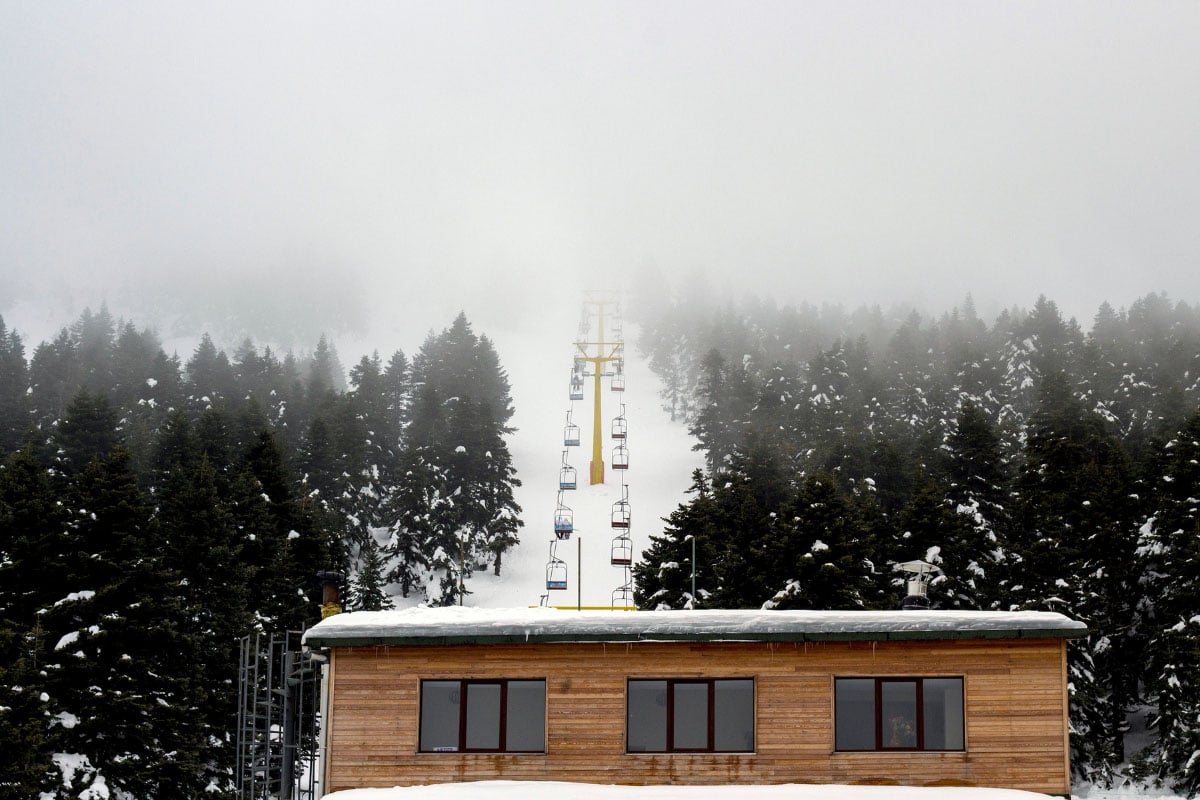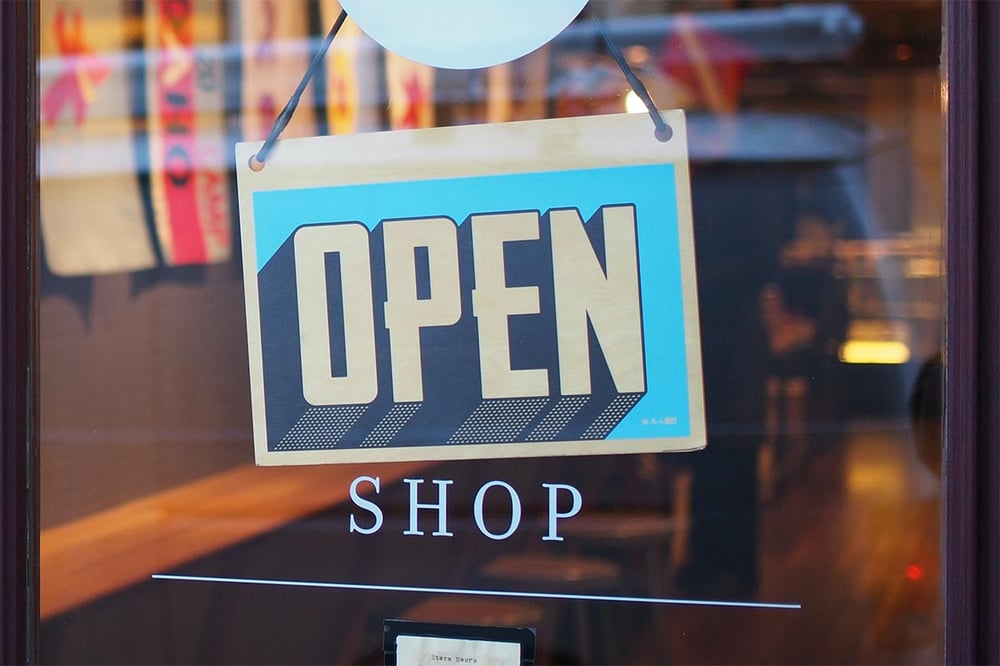Skiing is one of the most exciting and adrenaline-pumping activities for outdoor enthusiasts. But it isn't just a fun activity — the industry itself is also fascinating.
We've collected some of the most exciting ski industry statistics from various sources in one place so you can learn more about the industry. Special credit to Lauren Vanat, who annually publishes International Report on Snow & Mountain Tourism, filled with valuable information.
So, settle down for some intriguing skiing market stats and facts.
Ski resorts and areas
There are more than 5700 equipped ski areas in the world
There are over 5700 equipped ski areas worldwide, but just over 2000 have more than four lifts.
68 countries worldwide offer outdoor skiing
More than 68 countries worldwide offer conditions for outdoor skiing and snowboarding. When you throw indoor facilities and dry slopes on top, the number is closer to 100.
There are almost 26,000 ski lifts in the world
If you've ever had to trudge up an alpine peak, you'll immediately understand the value of a ski lift. Thankfully, there are plenty of them around. Statistics suggest that almost 26,000 ski lifts are spread across ski resorts worldwide.
There are around 400 million ski visits each year
About 400 million people visit ski resorts each year. Amazingly, the Alps account for almost 50% of these winter sports tourists.
Ski resorts can sleep up to 6 million people
According to ski industry statistics from Laurent Vanat, there are around 6 million commercial beds in ski resorts worldwide.
The global skiing market shrunk by 18% during the 2019-20 season
COVID-19 travel restrictions hit the skiing industry hard. Social distancing and travel restrictions kept skiers and snowboarders at home, causing significant issues for operators.
The global skiing market shrunk by about 18%, with Asia and the Pacific hit hardest at 31%. Steep declines like this are great out on the slopes, but not when it comes to revenue.
Thankfully, the industry rebounded, and thanks to pent-up demand, the 2020-21 season was a huge success.
COVID-19 cost the US ski industry about $2bn
Many businesses were devastated by the COVID-19 pandemic. Early closures in 2019 cost the US ski industry about $2bn dollars as many resorts closed their doors due to the virus outbreak. Indeed, 93% were forced to end the season early.
The ski and snowboard industry in the US is worth over $4.3bn
In 2022, the US ski resorts generated about $4.3bn worth of revenue. These figures have gradually increased over the last decade, with a notable dip in 2020 due to the COVID-19 pandemic.
New York has the highest number of operating ski areas in the US
A total of 473 ski areas operated in the United States during the 2021-22 season. Perhaps somewhat surprisingly, New York has the highest number of ski areas in the US, with 49 active areas. Michigan and Wisconsin follow New York as second and third.
The ski resort industry employs about 80,000 people in the US
The ski resort industry is a huge source of employment in the US. The industry directly employs over 80,000 people as instructors, chalet hosts, catering staff, salespeople, technicians, and more. Employment is growing 9.6% year-over-year too.
US ski resorts recorded all-time-high visits during the 2021-22 season
The number of skier visits is strongly linked to weather conditions and economic events. According to NSAA, the nationwide ski area visits in the US were at an all-time high in the last season, exceeding 60 million visits for the first time since 2010-11.
87% of US ski areas rely on advanced snowmaking technology
Artificial snow is used by many resorts to extend the ski season. Additionally, these technologies have made it possible to replace the loss of natural snow caused by climate change.
It's estimated that about 87% of the US ski areas use snowmaking technology to lay dense snow and build jumps and other attractions.
One-third of the world's ski resorts are in the Alps
As we mentioned above, there are about 2,000 ski resorts around the globe. However, the Alps account for over one-third of these winter sports destinations.
The Alps are the most extensive mountain range in Europe and stretch across seven countries: France, Switzerland, Italy, Liechtenstein, Austria, Germany, and Slovenia.
Campiglio Dolomiti di Brenta in Italy has the most skier visits
With almost 2.5 million skier visits over the last five winter seasons, Italy's Campiglio Dolomiti di Brenta is the most popular ski resort in the world. The Brenta Dolomites are a mountain range in the Southern Alps with 104 slopes and world-class amenities.
Interestingly, the Pareto principle also applies to resort visits, meaning that 20% of the largest resorts generate 80% of all resort visits.
Germany has the most ski areas in Europe
Germany has the highest concentration of ski areas in Europe, with a staggering 498. Russia (354), France (349), and Italy (317) are next up, with Portugal in last place with just one ski area.
However, if we look at resorts with more than four lifts, Germany is far behind France, Italy, and Austria.
In Andorra, 92% of skier visits are from foreign citizens
While most skier visits worldwide are from domestic tourists, Andorra heavily relies on foreign tourism. A staggering 92% of skier visits come from other countries. In Austria, 66% of ski visitors come from foreign countries.
Japan is falling out of love with skiing
Japan is famous for its peaks. In fact, mountains cover about 73% of the island's landmass. So, it's no surprise that skiing and snowboarding have historically enjoyed high popularity in the country.
However, interest in skiing peaked in 1993, with about one in seven Japanese citizens enjoying the winter sport. Where once about 18 million Japanese people enjoyed skiing, these days, that number is down to about 2.7.
There are several factors to consider here, such as the country's aging population, the decline of the economy since the 80s and 90s, and more competition from other leisure activities.
Whatever the exact cause, Japan has gone from having 661 ski facilities down to 442.
China already has more than 800 ski areas
While skiing is declining in Japan, all is not lost for the winter sport in Asia. China invests heavily in winter sports facilities, and the goal is to engage 300 million people in winter sports by 2025.
Today, there are nearly 800 ski areas, and new ones are being built rapidly.
Dry slopes and ski simulators are booming in China
It's not just alpine skiing that is popular in China. The country also has 45 dry slopes and a ski simulator industry growing by around 34% per year. Indeed, virtual slopes attracted about 780,000 visits in 2019.
Three of the five biggest indoor ski resorts opened between 2020 and 2021
As a testament to the growing popularity of indoor ski resorts, three of the five biggest facilities have opened over the last few years. With climate change making snowfall less predictable, we can expect to see this trend continue, according to the Indoor Snow Centers Guide.
Saudi Arabia is building a $500m ski resort in the desert
Saudi Arabia is building an outdoor ski resort in the desert. It's expected to be completed by 2026.
Number of skiers and skier demographics
The US has the most skiers by nationality
The United States has approximately 25 million skiers, making it the largest skiing nation in terms of active participants. Germany comes second with around 15 million skiers, followed by China and Japan.
Liechtenstein has most skiers per capita
Unsurprisingly, the most skiers per capita can be found in Central Europe. Liechtenstein has the highest skiers per capita ratio, with 36% of citizens who ski, followed by Switzerland (35%) and Austria (34%).
In the US, the national median age of skiers is 35
The median age of US skiers stands at 35. In the Pacific Southwest, this number is closer to 40, while in the Midwest, the median age is 17.
The median age of skiers has followed an aging trend in recent years, raising the burning question: how to attract new generations to winter sports.
63% of skiers have a household income of $75,000 or above
Perhaps unsurprisingly, for such a high-cost sport, the majority of the ski community (63%) makes more than $75,000 per year.
Additionally, 45% of skiers have an average household income of more than $100,000.
The average skier holds a bachelor's degree or higher
56% of skiers hold at least a bachelor's degree, only highlighting the problem that skiing attracts mainly wealthier and more highly educated citizens.
Female skiers account for 37% of winter sports participants
The gender breakdown of skiers in 2021-22 was about 63% male and 37% female. Unfortunately, these numbers are going in the wrong direction, with some skiing statistics suggesting a historical split of around 60% to 40%.
Snowboarders account for around one-quarter of ski visitors
In the 2021-22 season, snowboarders made up 27.9% of visitors to US ski areas. That number has held steady over the last few years.
Snowboarding looks like it's making a comeback after suffering declines from 2000 to 2010. Around 8 million snowboarders hit US slopes in 2021, the best year since 2010.
While the numbers aren't quite at the height of the snowboarding boom years from a few decades ago, they are moving in the right direction. For context, in 2013, only 6.42 million snowboarders braved the peaks.
Pacific Region has the highest number of active skiers in the US
According to research by Snowsports Industries America, the Pacific Region of the US has the highest number of active skiers. Over 3 million skiers in the area went out on the slopes seven times or more in 2020-21.
Only 11.3% of active skiers in the US belong to an ethnic minority
The ski industry in the US needs to do more to attract ethnic minorities. With an 88.7% share, the demographics of skiers are exceptionally concentrated among white, while only 11.3% of active skiers identify as an ethnic minority.
Several non-profits are working hard to make skiing more inclusive with various programs, grants, and diversity, equity, and inclusion (DEI) initiatives.
Ski and winter sport equipment sales
Wholesale sales of alpine skiing equipment in the US stood at 441m in 2021
While some suggest that skiing's popularity is on the wane, wholesale spending on ski equipment went up during 2021 to $441m. The cross-country skiing category, in particular, is growing rapidly as sales have almost doubled in the last two years.
The global ski gear and equipment market is worth over $6bn
In 2021, the global ski gear and equipment market was worth $6.277bn. Experts suggest that with a compound annual growth rate (CAGR) of 4%, the industry will be worth $8.287bn by 2028.
Austria is Europe's biggest importer and exporter of skis
Austria is in its own league regarding the value of imported and exported skiing equipment. As the export value stands at €334 million and the import value at €164 million, it's also the biggest net exporter of skiing equipment.
Skiing safety
Skiing is safer than you think
Skiing has a reputation as a dangerous pursuit, but serious injuries are infrequent. According to the data collected by National Ski Areas Association, there is less than a one in a million chance that a person dies while skiing. For instance, during 2021-22, 57 skiing deaths occurred, while there were over 60 million ski visits.
90% of skiers wear helmets
According to the National Ski Areas Association, 90% of skiers and snowboarders wear helmets in designated ski areas. Head injuries are the most common cause of fatal accidents on slopes. Wearing a helmet can reduce the likelihood of an injury significantly, so for the remaining 10%, let's make a deal to wear helmets from now on. Okay?
Knee injuries are the most common injury on the slopes
The most common type of skiing injury is an ACL tear. The ACL — or anterior cruciate ligament — is located in the knee. This type of knee injury is frequent in athletes and can take around six to nine months to heal.
Men account for 75% of skiing injuries
Skiing accident statistics from Sports Medicine Australia show that men account for 75% of accidents. Despite demographic information suggesting men make up around 60% to 63% of the skiing population, they are more likely to be injured on the slopes.
Moreover, the SMA says that 84% of hospitalizations happen to 18 to 34-year-olds. What is it with young men out on those slopes?
Cross-country skiing statistics
51% of Germany's above 18 have professed an interest in cross-country skiing
Interest in cross-country skiing is growing. More than 51% of Germans, 35 million citizens, have expressed interest in the activity. While downhill skiing is still the most popular form of this winter sport, more skiers are embracing this kind of tourism.
You can burn about 600 calories an hour with cross-country skiing
Cross-country skiing is a demanding activity that can help you burn a lot of calories. The accurate calorie burn rate depends on multiple factors, but a steady pace of around 2.5 miles an hour can help you shed about 600 calories. An elite skier can burn even more, with approximately 1,000 per hour as standard.
Europe's winter sports equipment sales grew the most in the Nordic skiing category
According to FESI, sales in the Nordic skiing category grew approximately 33% compared to last year, leaving behind every other winter sports equipment category.
Cross-country skiing participation is dropping in US schools
Over 4,600 boys and 4,500 girls participated in cross-country skiing in US schools in 2021-22. These numbers are down slightly from figures from 2018.
Fun facts
The record for the fastest speed on skis is over 250 kph
Italy's Ivan Origone broke the world record for the fastest speed on skis in 2016, accelerating to 254.9kph. An average downhill skier usually reaches speeds between 30-60kph.
Some historians believe that the birthplace of skiing is... China
While many people associate the birth of skiing with Western Europe, some historians believe the sport originated in China.
Cave paintings in the lowlands of the Altai Mountains depict humans using skis to hunt animals. Historians suggest that this wall art stretches back between 8,000 and 12,000 years.
The word ski comes from the Old Norse word skíð
The word ski comes from the Old Norse word skíð, which can be roughly translated as a stick of wood.
Ski lifts were invented in Germany in 1908
While ski lifts have become an integral part of any ski trip, they weren't available until 1908. Until their invention, skiers had to climb up peaks on foot. It's no wonder that the industry didn't truly take off until the 20th century.
Silverton Mountain in Colorado is the highest ski area in the US at 13,487 feet
Silverton Mountain in Colorado has a peak of 13,487 feet (4111 meters), making it the highest ski area in the US. You should know that their ski lift will only drop you about 12,000 feet of the way there, so you'll need to do about 1,500ft climb on your own. However, locals say it's worth every step.
St. Moritz in Switzerland is said to be the oldest ski resort in the world
Winter sports tourism is said to have originated in St. Moritz in Switzerland over 160 years ago when Johannes Badrutt opened the legendary Kulm Hotel.
A fun fact is that the hotel had Switzerland's first electric lighting, installed in 1879.
Skiers account for 8% of arrivals at Denver International Airport
Statistics from the Colorado Ski Country USA suggest that skiers account for 8% of arrivals at Denver International Airport. That's almost 600,000 people!
Skiing can make you smarter
Skiing can make you smarter, according to sports scientist Frieder Beck. Because skiing involves developing skills like planning and concentration, Beck suggests that it helps children focus and improve mental performance.
If you've ever needed an excuse to drag the family onto the slopes, you've got one!
Wrapping up
The world of skiing is full of fascinating stats and facts. The industry is bouncing back from the COVID-19 pandemic and enjoying remarkable growth in some regions.
The industry is undoubtedly facing challenges, and to continue its remarkable history, it must be able to navigate the impacts of global warming while figuring out how to attract new generations to the sport and become more inclusive.
However, the thrill of skiing is undeniable, which is why there is no doubt that the industry will find ways to create new growth.










